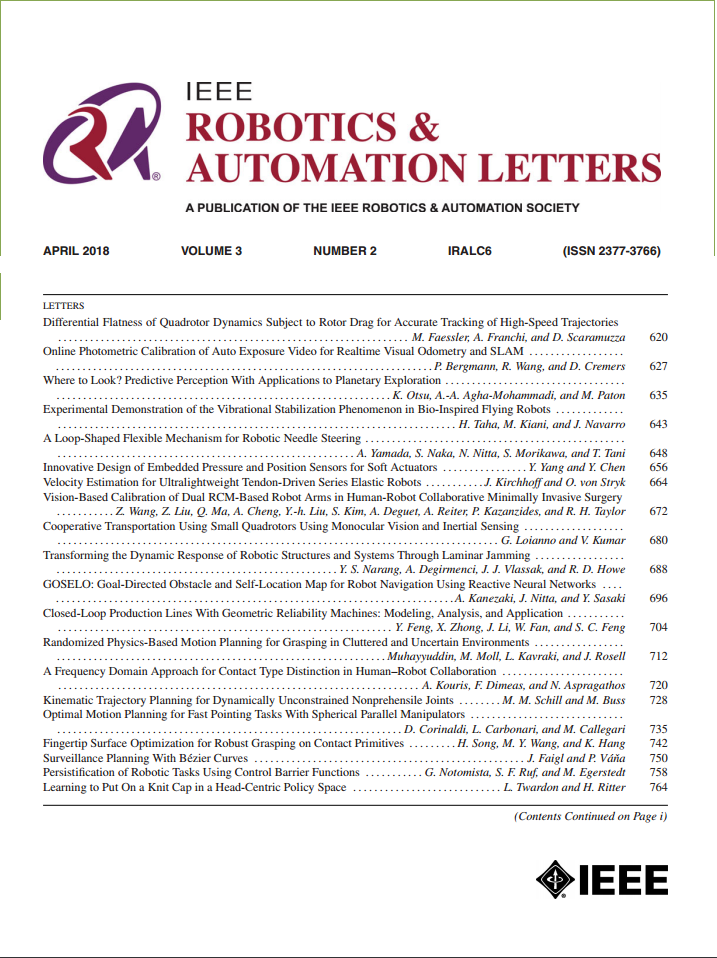Efficient Training Data Collection for Distance Sensor Arrays Through Data Correction and Augmentation Approaches
IF 4.6
2区 计算机科学
Q2 ROBOTICS
引用次数: 0
Abstract
Several machine learning (基于数据校正和增强方法的距离传感器阵列有效训练数据采集
已经提出了几种基于机器学习(ML)的测量系统,用于从距离传感器阵列的值估计难以测量的量。然而,在将从原始采集传感器获取的训练数据传输到新的目标传感器时,传感器输出特性(OCs)的变化会导致估计精度下降。此外,从目标传感器获取训练数据耗时费力。我们提出了两种方法来转换以前收集的训练数据,以反映不同的oc,使它们能够重复使用。为了评估,我们使用了一种设备,该设备根据距离传感器阵列的值估计车辆的相对位置和方向。基于OC数据的训练数据修正方法与传输训练数据相比,将均方根误差(RMSE)降低了23%。增强方法使用由一小批训练数据构造的映射函数将训练数据转换为包含不同oc的数据。此外,还展示了一种收集小批量训练数据以获得更高的OC转换精度的方法。与转移训练数据相比,该方法的RMSE降低了58%。本研究结果证明了基于ml的距离传感器阵列测量系统实际应用的可行性,为开发简单快速的校准方法提供了便利。
本文章由计算机程序翻译,如有差异,请以英文原文为准。
求助全文
约1分钟内获得全文
求助全文
来源期刊

IEEE Robotics and Automation Letters
Computer Science-Computer Science Applications
CiteScore
9.60
自引率
15.40%
发文量
1428
期刊介绍:
The scope of this journal is to publish peer-reviewed articles that provide a timely and concise account of innovative research ideas and application results, reporting significant theoretical findings and application case studies in areas of robotics and automation.
 求助内容:
求助内容: 应助结果提醒方式:
应助结果提醒方式:


